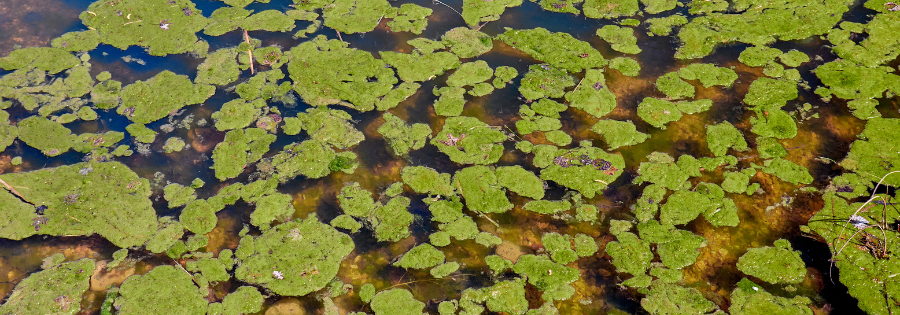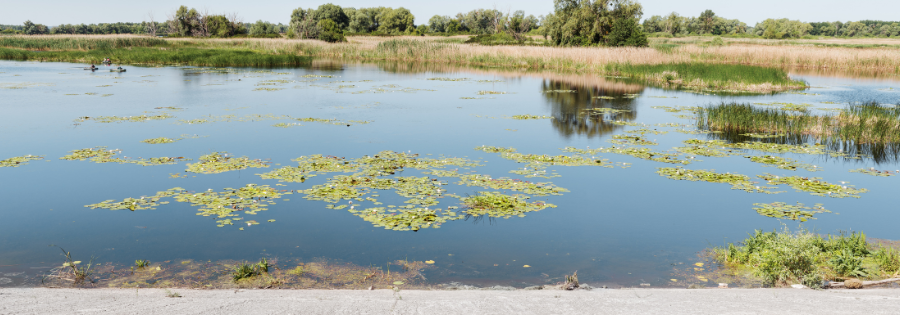5 Factors to Consider in Aquatic Vegetation Control

Aquatic vegetation, while essential for a healthy ecosystem, can sometimes become a nuisance when it overgrows and disrupts water bodies. Effective aquatic control programs are crucial to maintaining the balance between a thriving aquatic environment and preventing issues such as reduced water flow, blocked access, and ecological imbalances.
Things To Keep in Mind When Controlling Aquatic Vegetation
Plants are often an essential component of many aquatic environments. However, in many instances, aquatic vegetation (especially in excess) can prove detrimental for various reasons. When controlling aquatic vegetation, it’s important to remember that the most effective methods will depend on many factors. Let’s explore the key factors when implementing aquatic vegetation control measures.
1. Type of Water
Static water will require different methods to control vegetation than water that is flowing. The UGA Cooperative Extension states that dredging and deepening is an adequate method of controlling aquatic vegetation in a shallow pond. Herbicide application can also be successful in smaller bodies of static water.
Flowing water may require other methods, such as mechanical or biological treatments. If there are any chemicals in flowing water, it’s often recommended to use herbicides that can be absorbed quickly and to apply them during times of minimal wind. You should make sure to use herbicides that are deemed environmentally safe.
2. Weed Identity
Different types of weeds will not respond in the same way to every treatment method. If algae are the type of vegetation that needs to be eliminated, you should focus on nutrient reduction using phosphorus. Various techniques can be used to control the level of algae, including chemical, biological, and mechanical.
Certain weeds may only be eradicated by the use of chemicals.
According to Purdue University, removing cattails using mechanical methods such as raking is difficult. If the goal is total elimination of all vegetation, stocking the pond or lake with Grass Carp is a method of biological control that can be highly effective. However, if there are only certain types of vegetation that you want eliminated, another option should be considered.
3. Water Temperature
In general, aquatic vegetation will flourish in warmer water temperatures. In colder bodies of water, there is typically less vegetation, and mechanical methods may be enough to eliminate unwanted weeds and plants.
Removing plants by hand once or twice a year may be enough to maintain the beachfront area of a Wisconsin Lake because the water temperatures will remain relatively low for most of the year. For a lake or pond in Florida, however, hand-pulling would have to be done often enough that either a biological or chemical method would prove more practical.
4. Types of Fish in the Water
If there is a large amount of wildlife in the water, mechanical methods are usually not the best option for removing vegetation. Mechanical methods can easily disturb sediments, and smaller fish and turtles may be negatively affected.
According to the Texas A&M AgriLife Extension, most aquatic herbicides are not dangerous to fish. However, it’s important to take precautions regarding the types of fish in any given body of water. One possible solution when using chemicals is to treat only portions of the water at a time, allowing fish to temporarily move to other areas.
5. Recreational Use of the Water
It’s also necessary to determine how the water is used before selecting a method of removing and controlling aquatic vegetation. Water manipulation, such as drawdowns, is not a good choice, especially in summer if the water is used for swimming, boating, and other recreational activities. Biological methods may upset the balance of fish populations if the water is used for fishing. There are a variety of chemical control methods that can be safely used in water where fishing and swimming take place. It should be noted that many chemicals have restrictions for a brief time after the herbicides have been applied.
These factors must all be considered when deciding the best method to control aquatic pests and vegetation. After determining what way will work best, you’ll need to ensure you’re familiar with your area’s state and local laws.
Take Control of Your Aquatic Vegetation Issues with Coastal Spray
Aquatic vegetation control is a complex task that requires careful consideration of various factors. By understanding the types of vegetation, assessing environmental impacts, complying with regulations, and choosing appropriate methods, you can effectively manage aquatic plant growth and maintain the health of your water body. At Coastal Spray, our team of experts specializes in restoring the balance of your aquatic ecosystems.
Contact us today to schedule a consultation and discover how we can help you achieve a healthier and more vibrant water body.
